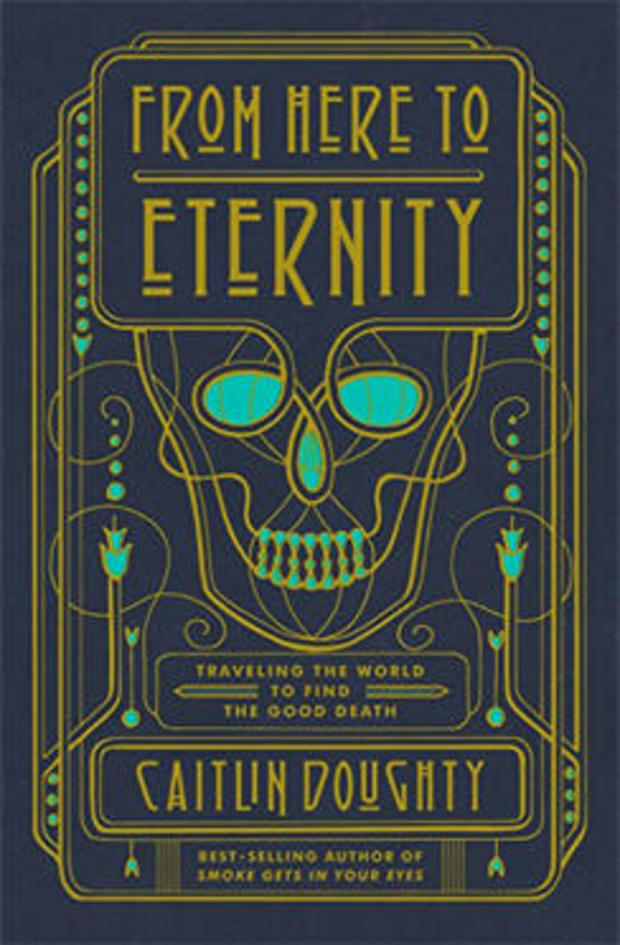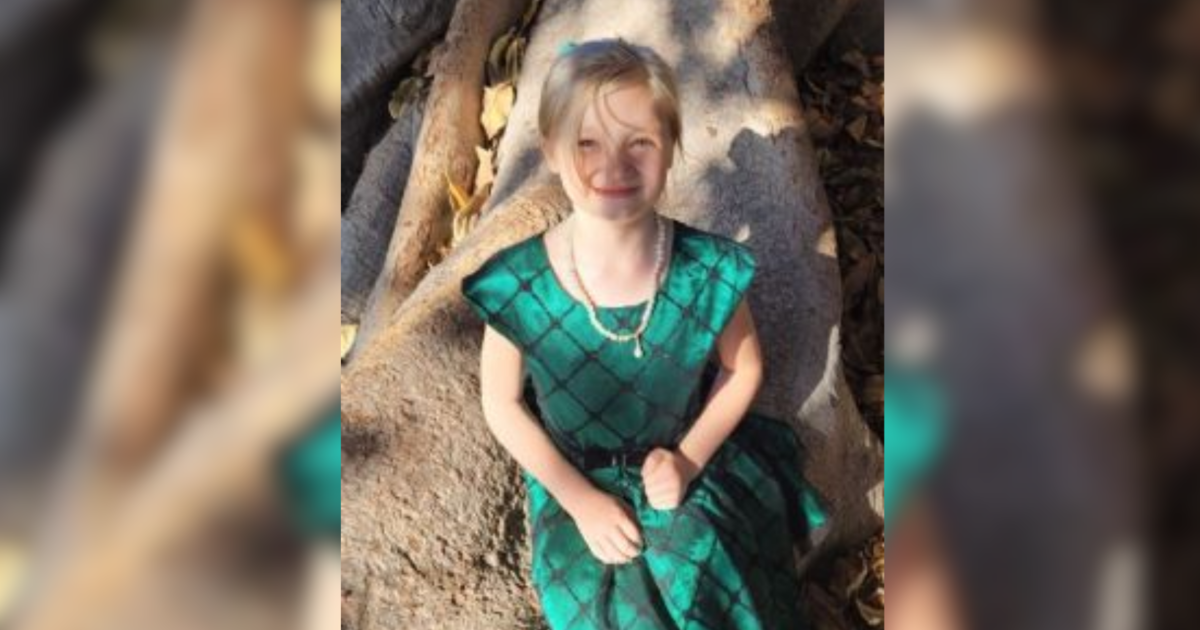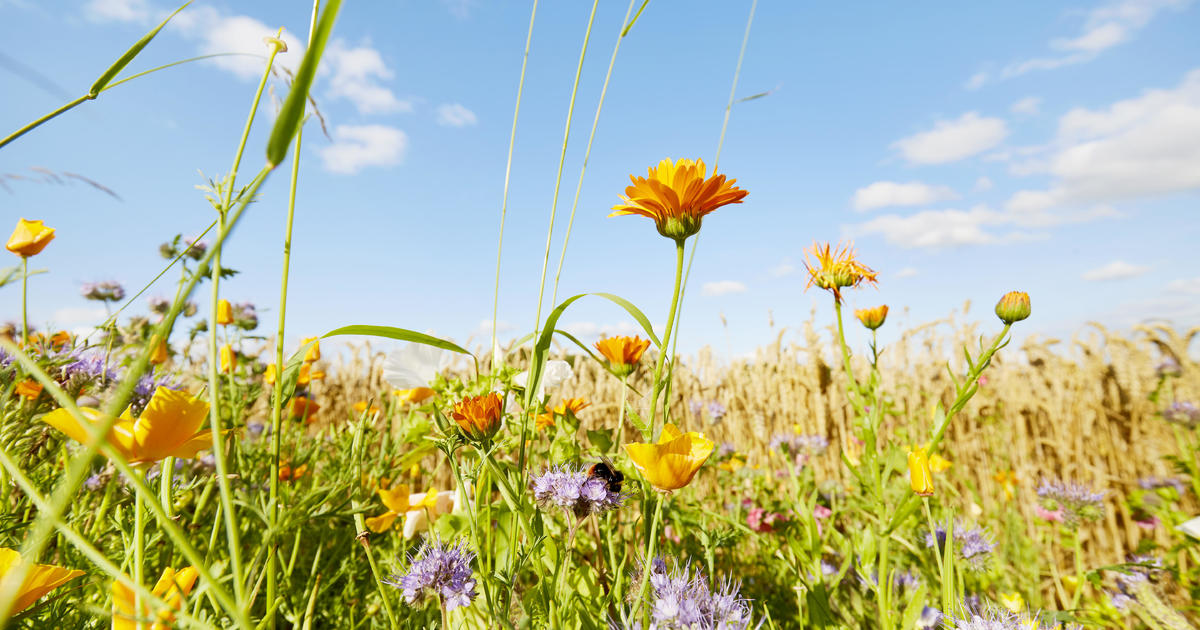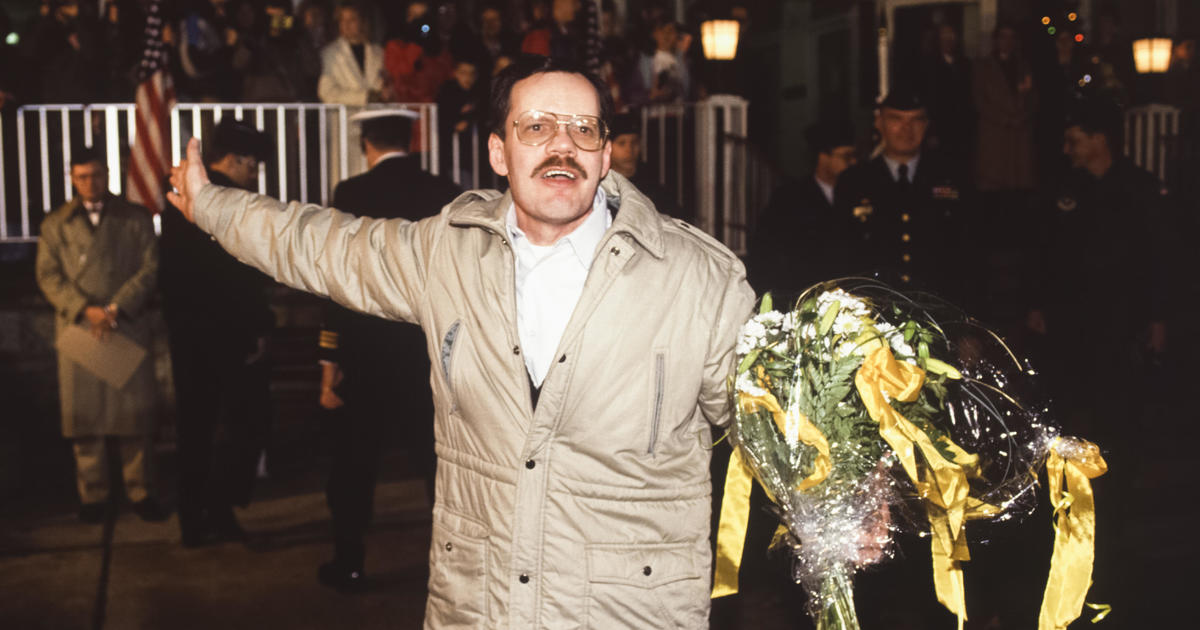Book excerpt: Caitlin Doughty's "From Here to Eternity"
In "From Here to Eternity: Traveling the World to Find the Good Death" (W.W. Norton), mortician Caitlin Doughty, author of the bestselling "Smoke Gets in Your Eyes: And Other Lessons from the Crematory," traveled the world to explore how various cultures treat the dearly departed.
Read an excerpt from her book below -- and don't miss Luke Burbank's interview with Doughty on "Sunday Morning" October 29!
Koukokuji Buddhist temple, a seventeenth-century building tucked away off a quiet street in Tokyo, is home to a modest cemetery, with aged headstones representing generations of families that have come to worship here. A black and white cat lounged on the stone path. We stepped out of modern Tokyo and into a Miyazaki movie. Yajima jūshoku (jūshoku means head priest or monk) emerged to greet us, an affable man in a brown robe with close- cropped white hair and glasses.
In contrast to his archaic surroundings, Yajima jūshoku is a man of new ideas, specifically, how to memorialize cremated remains (my kind of guy). Funeral directors in the United States blanch with fear at the thought of a national "cremation culture," which would undercut profit margins in embalming and casket sales. In reality, we have no idea what a homogenous "cremation culture" might look like. But the Japanese do. They have a cremation rate of 99.9 percent—the highest in the world. No other country even comes close (sorry, Taiwan: 93 percent; and Switzerland: 85 percent).
The emperor and empress were the final holdouts, still choosing full body burial. But several years ago, Emperor Akihito and his wife Empress Michiko announced they would also be cremated, breaking with four hundred years of royal burial tradition.
When Koukokuji Temple reached capacity, the priest Yajima could have invested in an old-fashioned cemetery space. Instead, seven years ago he built the Ruriden columbarium. (Columbaria are separate buildings for storing cremated remains.) "Buddhism has always been state-of-the-art," he explained. "It is quite natural to use technology alongside Buddhism. I see no conflict at all." With that, he showed us through the doors of the complex's newest hexagonal building.
We stood in the darkness while Yajima punched something into a keypad at the entrance. Moments later, two thousand floor-to-ceiling Buddhas began to glow and pulse a vivid blue. "Woooaahhh," Sato-san and I bleated in unison, stunned and delighted. I had seen photographs of Ruriden, but to be surrounded, 360 degrees, by the luminous Buddhas was overwhelming.
Yajima opened a locked door, and we peeked behind the Buddha walls at six hundred sets of bones. "Labeled to make it easy to find Miss Kubota-san," he smiled. Each set of cremated remains corresponded to a crystal Buddha on the wall.
When a family member comes to visit Ruriden, they either type in the name of the deceased or pull out a smart card with a chip, similar to the cards used on Tokyo's subways. After the family keys in at the entrance, the walls light up blue, except for one single Buddha shimmering clear white. No need to squint through names trying to find Mom—the white light will guide you straight to her.
"All of this evolved," said Yajima. "For example, we started with a touch pad, where you type in your family member's name. One day I saw a very old woman struggling to type a name in, so that's when we got the smart cards. She just had to tap the card and can immediately find her dead person!"
Yajima headed back to the keypad controller, and instructed us to stand in the center of the room. "The autumn scene!" he announced, and the formation of Buddhas turned yellow and brown with shifting red patches, like piles of freshly fallen leaves. "Winter scene!" and the Buddhas turned to snowdrifts of light blue and white. "Shooting star!" and the Buddhas turned purple as white spots jumped from Buddha to Buddha, like a stop-motion animation of the night sky.
The majority of columbaria leave no room for innovation. Their design is the same the world over. Endless rows of granite walls, where ashes reside behind the etched names of the dead. If individuality is a priority, you may be allowed to affix a small picture, a stuffed bear, or a bouquet of flowers.
This LED light show could have been a Disney production, but there was something in the sophisticated design of the lights that made it feel as though I were being swaddled in a Technicolor womb.
"The afterlife of Buddhism is filled with treasures and light," Yajima explained.
Religious scholars John Ashton and Tom Whyte described the Pure Land (the celestial realm of East Asian Buddhism) as "decorated with jewels and precious metals and lined with banana and palm trees. Cool refreshing ponds and lotus flowers abound and wild birds sing the praises of the Buddha three times a day."
In designing Ruriden, Yajima was creating "an afterlife along the path of Buddha."
The Buddha lights weren't always this elaborate. One of the early visitors to the new facility at Ruriden was a light designer, and she volunteered to create the scenes from different seasons. "At first, the lights looked like a Las Vegas show!" Yajima laughed. "This is not a toy, I said! Too much! We canceled that. As natural as possible, I said. The work is still happening to create that atmosphere, as natural as possible."
Yajima invited us for tea inside the temple and offered me a stool, brought out for visiting foreigners. He believed I couldn't endure sitting cross-legged on the floor mats for the duration of tea and conversation. I assured him I absolutely could. (I couldn't. My legs fell painfully asleep within the first three minutes.)
I asked Yajima why he had designed Ruriden the way he did, and his response was impassioned. "We had to act, we had to do something. Japan has fewer children. Japanese people are living longer. The family is supposed to look after your grave, but we don't have enough people to look after everyone's grave. We had to do something for those people left behind."
A full quarter of Japan's population is over the age of sixty-five. That, combined with a low birthrate, has caused Japan's population to shrink by one million people in the last five years. Japanese women have the longest life expectancy in the world; Japanese men have the third longest. More importantly, their "healthy life expectancy" (not just old, but old and independent) is the longest for both genders. As the population ages, the need for nurses and caregivers is swelling. People in their seventies are caring for people in their nineties.
My interpreter, Sato-san, knows this well. She herself is responsible for the care of six people—her parents, her husband's parents, and two uncles. All are in their mid-eighties or early nineties. A few months ago, her great aunt died at one hundred and two.
This army of the elderly (the "silver market") worked their whole lives, saved money, and had few if any children. They have money to burn. The Wall Street Journal said that "one of Japan's hottest business buzzwords has become 'shūkatsu' or 'end of life,' referring to the explosion of products and services aimed at people preparing for their final years."
Revenues in the Japanese death industry have increased by 335 billion yen (3 billion US dollars) since the year 2000. A company called Final Couture markets designer shrouds and specialized photographers create end-of-life portraits to be displayed at funerals.
People show up years in advance to purchase their Buddhas at Ruriden. Yajima encourages them to visit often and pray for others, and thereby face their own death. When they die, "they will be welcomed by the people who went to Buddha before you."
Then there are those who do not plan ahead, who have no close family. Their bodies leave dismal reddish-brown outlines on carpets or bedspreads when they are not found for weeks or months after death. They are victims of Japan's epidemic of kodokushi, or "lonely deaths": elderly people who die isolated and alone, with no one to find their bodies, let alone to come pray at their graves. There are even specialized companies hired by landlords to clean what is left behind after a kodokushi.
When Yajima built Ruriden, he "thought of the man who doesn't have any children and says, 'What will I do, who will pray for me?' "
Each morning, Yajima enters Ruriden and punches in the day's date. That morning he punched in May 13. Several Buddhas glowed yellow, representing the people who had died on that day. Yajima lit incense and prayed for them. He remembers them, even if there is no family left to do so. For an elderly man or woman with no remaining family, the glowing Buddhas at Ruriden will act as their afterlife community.
Yajima jūshoku may be a powerful priest, but he is also a designer. "When I pray, I also think about creating. How do we create something new, filled with dazzling light? How do we create new Buddhas?"
For him, the act of prayer is essential to creativity. "Every time I pray, the different ideas pop up. . . . I'm not a man who sits at a desk to create a plan. It's all while I'm praying."
What if Ruriden fills up with ashes? "If it fills up then I will consider a second or third." Yajima smiled. "I'm already thinking of them."
From "From Here to Eternity: Traveling the World to Find the Good Death" by Caitlin Doughty. Copyright © 2017 by Caitlin Doughty. Reprinted courtesy of W.W. Norton.
For more info:
- "From Here to Eternity: Traveling the World to Find the Good Death" by Caitlin Doughty (W.W. Norton), in Hardcover, eBook and Digital Audio Download formats. Available via Amazon.




